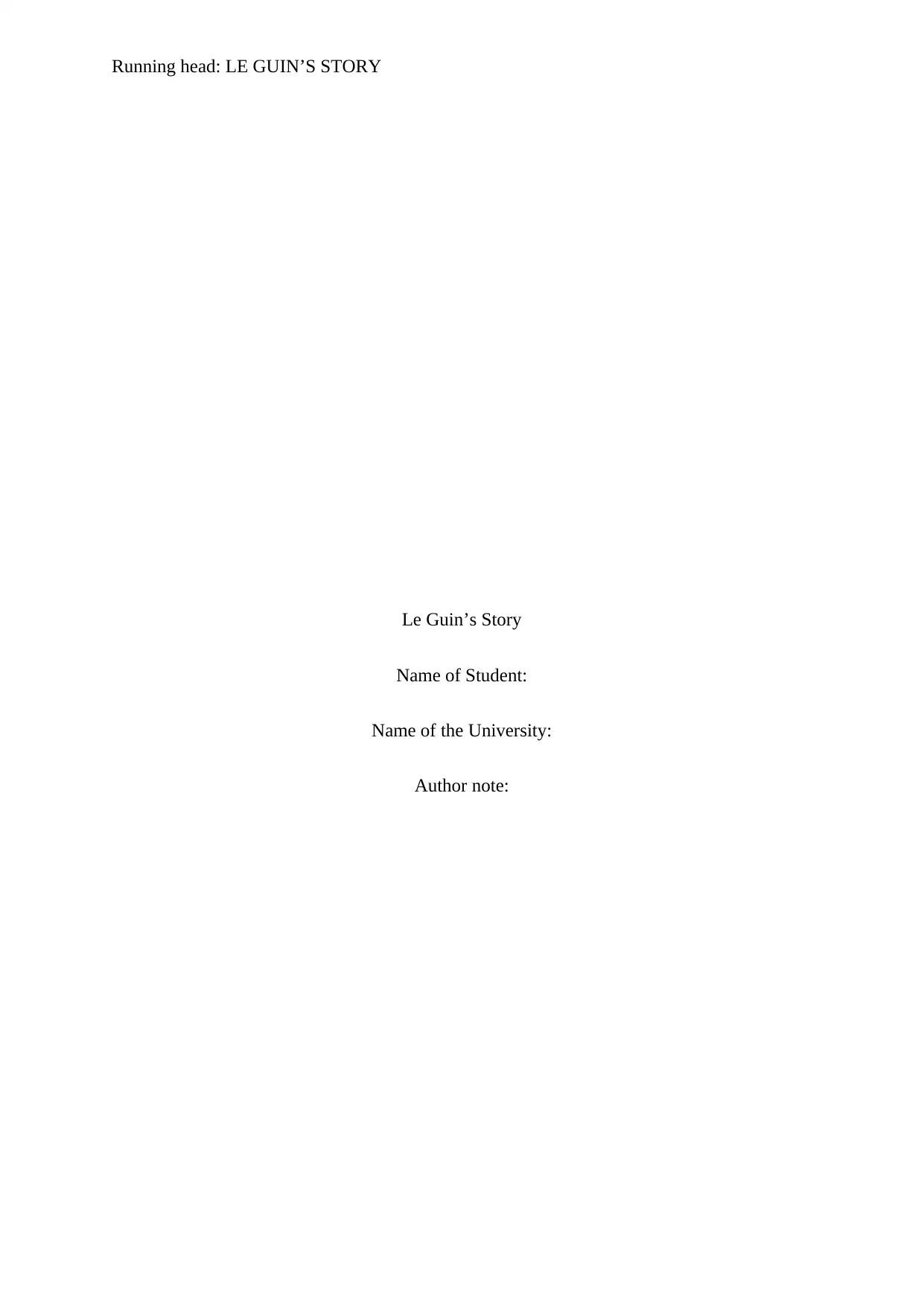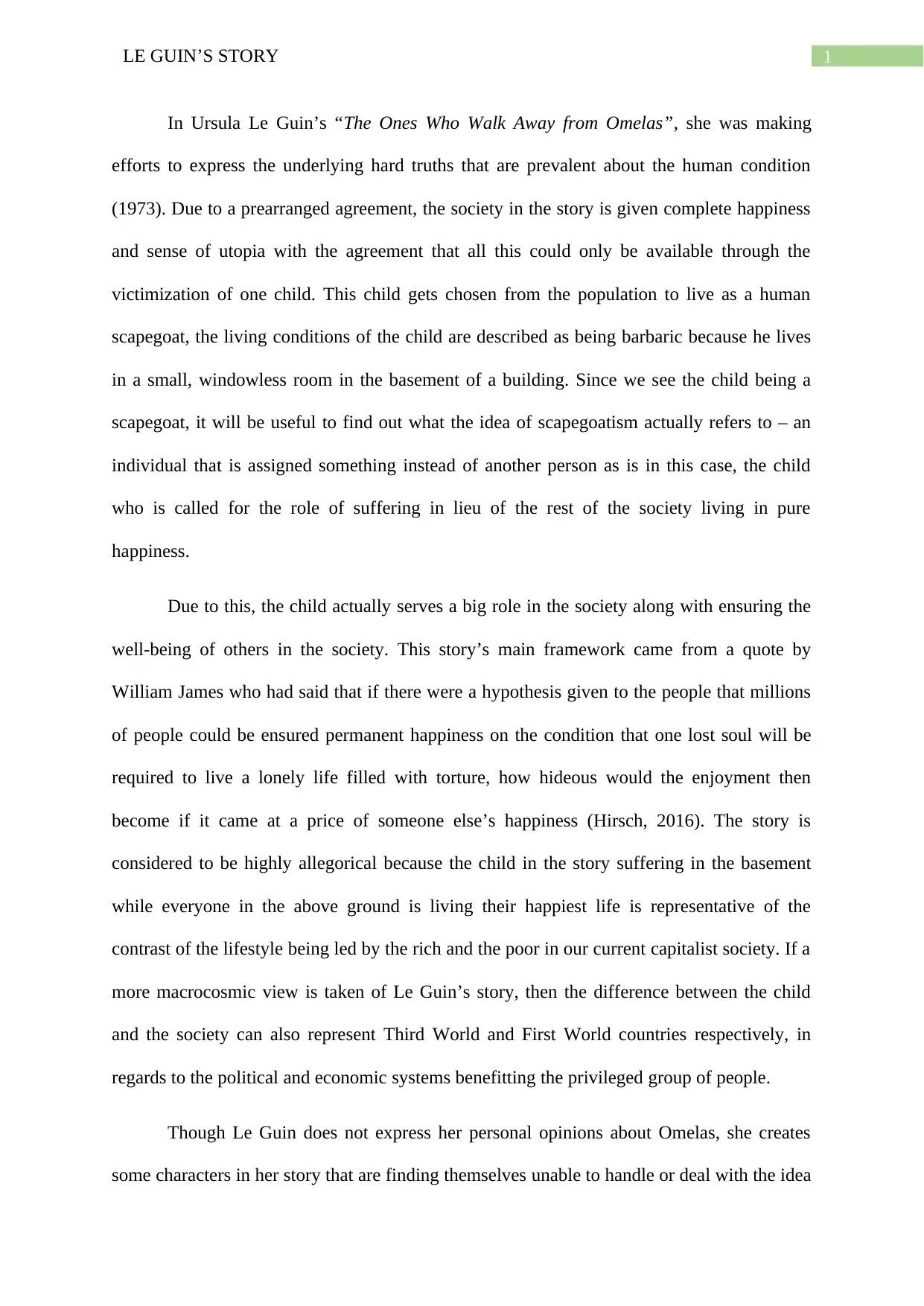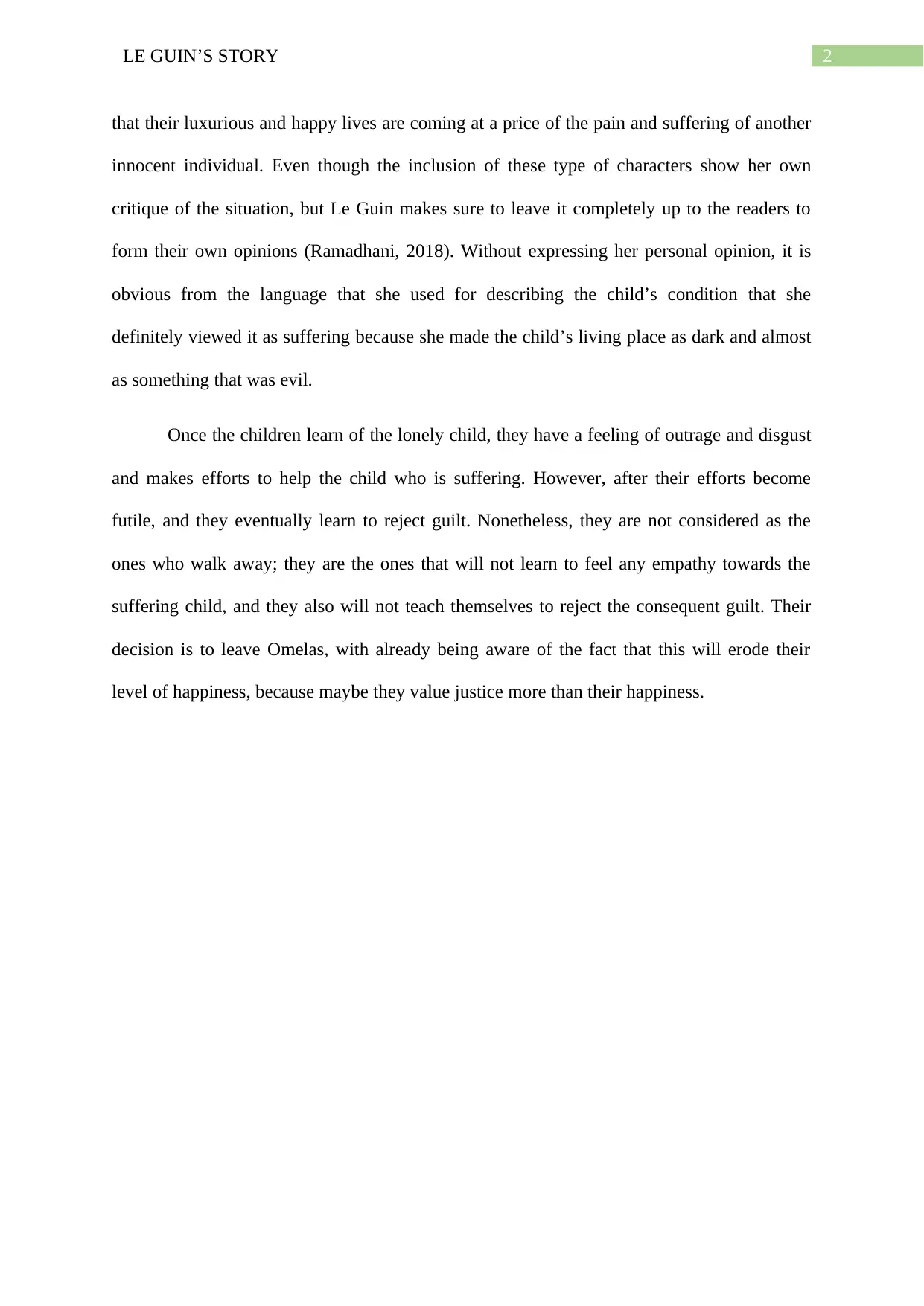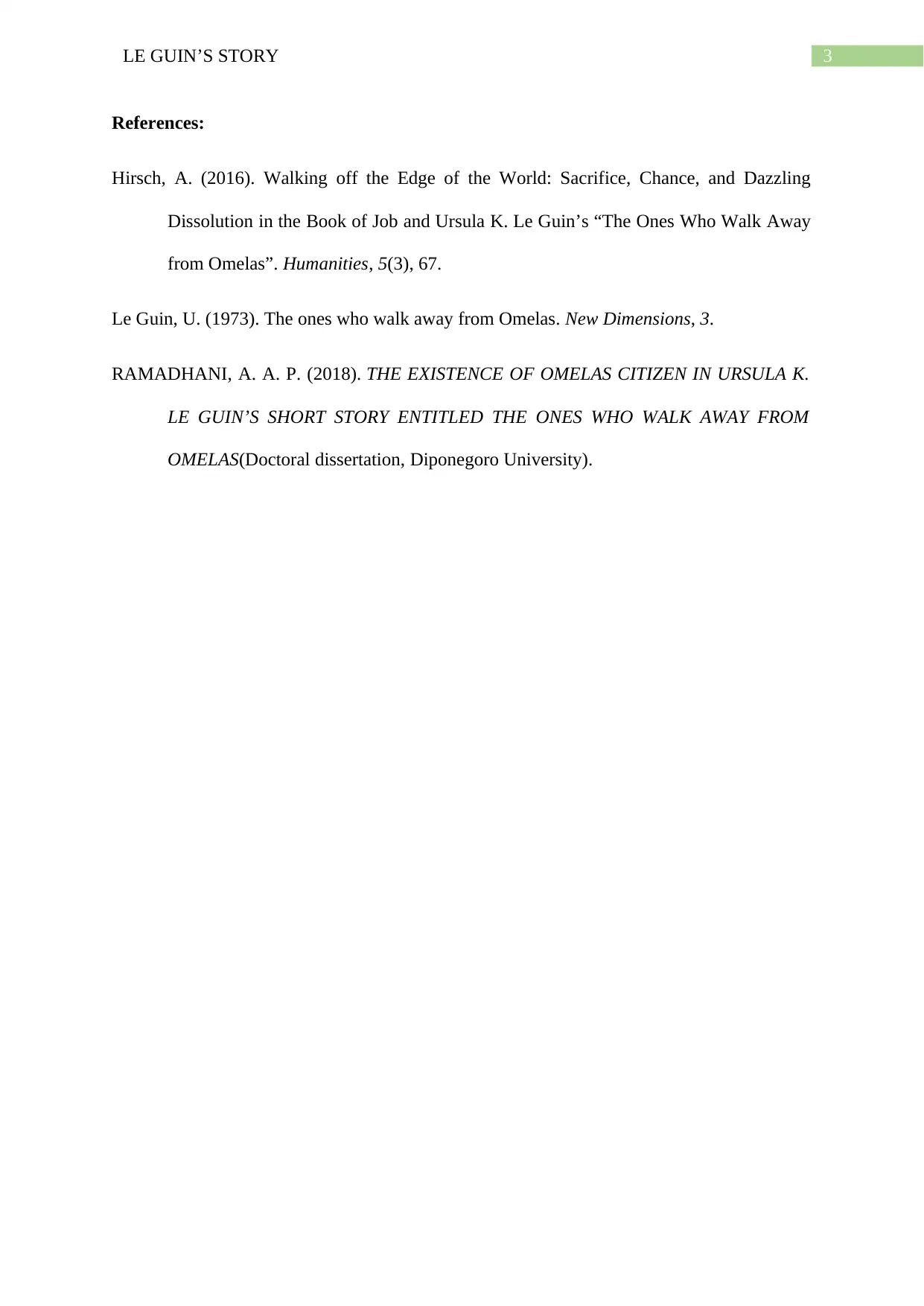Essay: Deeper Meaning and Analysis of Ursula K. Le Guin's Omelas Story
VerifiedAdded on 2023/01/23
|4
|804
|68
Essay
AI Summary
This essay provides an analysis of Ursula K. Le Guin's 'The Ones Who Walk Away from Omelas,' exploring the story's central themes and allegorical nature. The essay examines the concept of scapegoatism within the context of the story, highlighting how the happiness of the utopian society of Omelas is contingent upon the suffering of a single child. It delves into the philosophical underpinnings of the story, referencing William James's thought experiment about sacrificing one individual for the happiness of many. Furthermore, the essay discusses the story's societal critique, drawing parallels between the child's suffering and the disparities in capitalist societies, as well as the relationship between First and Third World countries. The essay highlights Le Guin's narrative choices, particularly her description of the child's environment and the reactions of the citizens of Omelas, emphasizing the ethical dilemmas posed by the story and the significance of individual choices. The essay concludes by discussing the characters who choose to leave Omelas, suggesting they value justice over happiness.
1 out of 4







![[object Object]](/_next/static/media/star-bottom.7253800d.svg)